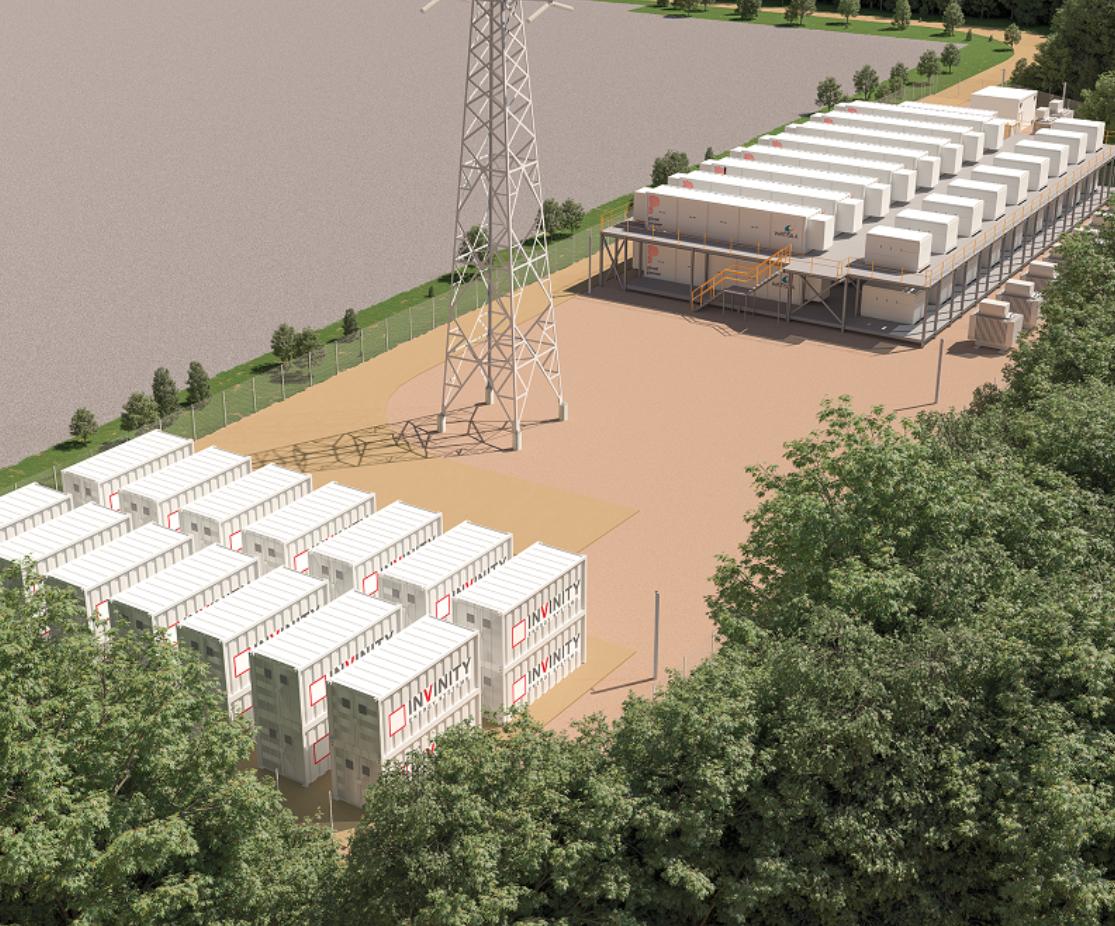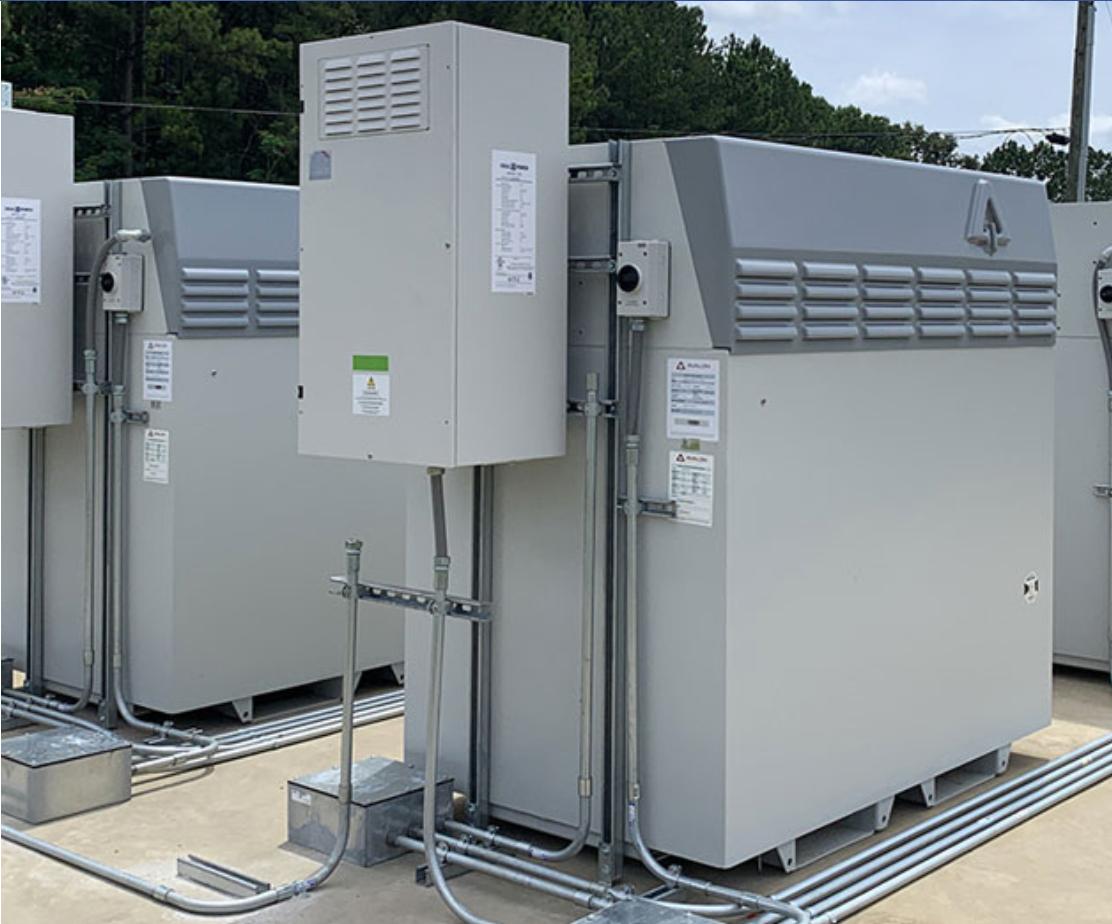Energy storage technologies appear to be following a trajectory similar to renewable generation. As prices continue to drop and innovative solutions emerge, competition is on the rise and greater efficiencies are created. It’s still early days for the battery market, and a variety of battery technologies are jostling for the leading position.
Aside from the familiar lead-acid batteries that have long dominated the renewable energy market, a few of the most popular are lithium-ion, lithium-iron phosphate, and nickel-iron batteries.
While some market-leading battery types struggle with limited lifespan, thermal runaway (li-ion), depth of discharge (lead-acid), or declining performance (li-ion and lead-acid), the potential advantages of a relative newcomer to the battery scene are becoming more apparent: Flow batteries hold the promise of frequent, virtually unlimited cycling without degradation, which gives them a special niche in energy storage.
Invinity Energy Systems, a company formed recently by the merger of Avalon in the US and Red T in the UK, is a specialist in flow batteries, setting out to popularize flow battery technology, particularly among utility and C&I customers.
Why flow battery technology is well-adapted to utility use
Flow batteries store energy in large tanks of liquid electrolyte that is pumped through electrodes and then pumped back in the recharging process. Sometimes compared to the fuel tank of an engine, flow batteries are the larger, heavier, more robust cousin of the light, energy-dense lithium-ion batteries that power our electric vehicles, laptops, and phones.
But flow batteries have interesting characteristics that make them an ideal choice for large-scale energy storage. First, the vanadium electrolyte, which is presently used in most flow batteries, can reliably charge and discharge for thousands of cycles without degrading; that’s because of the electrochemical properties of vanadium, which make it very easy to remove electrons from this element and then put them back again.
This means that the flow battery is a workhorse that can cycle multiple times per day, theoretically lasting for 30 years while maintaining an even performance.

Big and heavy as they are, flow batteries appear to be a more interesting option for utilities and commercial and industrial customers that are thinking long-term and want several hours of energy storage.
In fact, according to Matt Harper, Chief Commercial Officer at Invinity Energy Systems, it used to be that the more typical use case for battery storage was one to two hours. Now, he says, “everything in California is up to four hours,” and he predicts that energy designers will soon require six to eight hours of battery use in their projects. Flow batteries do very well with this timeframe, he adds, providing two to ten hours of discharge.
Lithium-ion batteries: A powerful burst of energy
Lithium-ion batteries, on the other hand, have a higher power density, which means they can deliver a large burst of energy very quickly. They are lighter than flow batteries and more portable, hence their value in electric vehicles and small electronic devices. But, they are volatile, with a tendency to overheat and catch fire if handled improperly. When cycled fully on a daily basis, lead batteries would normally last 2-3
years, lithium batteries can be expected to last about 8 years, and vanadium-based flow batteries are expected to last 30 years.
Oxford, UK: Complementary battery technologies
These two battery technologies and their synergies will come into sharp relief since they are conceived as a “hybrid battery” in a new project in Oxford in the UK, where planners are designing an energy “superhub” that will provide heat, electrify transportation, and decarbonize the grid.
The project will feature a large EV charging network connected directly into National Grid’s extra-high voltage transmission network, a system of ground source heat pumps, the unique synergy of flow and lithium-ion batteries, and an energy trading platform.
Invinity will supply a 2 MW flow battery that will provide 5 MWh of energy. The main role of the flow battery, explains Harper, is to act as a giant shock absorber between the grid and variable energy flows that will be created as people plug into the extensive EV charging network.
“What they’re trying to avoid,” says Harper, “is that if you’re going to go [to] the electric grid and inject variable resources and variable loads (such as EVs), you’re going to completely destabilize the supply and demand equation.”

Photo: Energy Superhub Oxford
The flow battery, he adds, will be “the tip of the spear” in regulating these sudden changes, so that the grid will remain stable. The flow battery will act as a ‘first responder’ handling a large proportion of the battery ‘calls’, allowing the lithium-ion battery to be reserved for more occasional use when a burst of high power is required.
The flow battery will also be a money-maker for the project, bidding into the “Fast Frequency Response” (FFR) market up to 15 times every hour to produce or absorb energy. One other component of the project is a contribution by Habitat Energy, which will provide optimization and trading services for battery storage assets in the UK wholesale market, as well as the Balancing Mechanism and ancillary services markets.
Up until now, that’s the sort of service that could only be supplied by fast-acting natural gas turbines. So as people charge their cars and drain electricity from the grid, the ability of the flow battery to reliably cycle dozens of times every day in response to power fluctuations will be invaluable.
Harper says that trends towards decentralized energy are boosting the prospects for flow batteries. As the need for EV charging infrastructure increases, along with the potential for disruption on distribution feeders, he thinks that the ability of flow batteries to regulate major fluctuating loads will become more valuable.
To learn more about flow battery technology, please join us October 12-16 for the 8th Annual HOMER International Microgrid Conference, held virtually this year.
On October 16th Brian Ballek, Commercial Analyst for Invinity, will present about recent advances in flow technology, pricing trends, optimal use cases in microgrids, and practical strategies for modeling flow battery-enabled installations. To register, visit Microgridconference.com.
